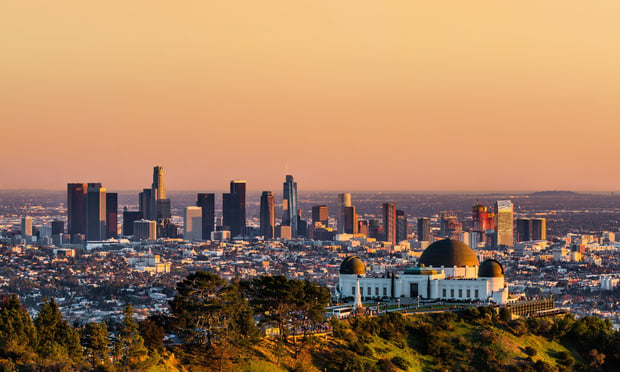NEWPORT BEACH, CA—Changing a company's space can define its current culture as well as help it to achieve its corporate goals, H. Hendy Associates principal Jennifer Walton tells GlobeSt.com. The firm was recently selected to design Kawasaki Motors Corp. USA's new 200,000-square-foot North American headquarters in Foothill Ranch, CA, to mark the company's 50th anniversary in the US. H. Hendy will create a branded-office experience that will help Kawasaki increase team-member engagement in a workspace that will be anchored by a two-story atrium with skylights that will serve as a gathering space for team members and clients. Additional lifestyle amenities will include a large eating area with food-service options, a fitness center, table tennis and a yoga studio as well as a Kawasaki museum to showcase vintage branded products and company memorabilia. We spoke exclusively with Walton about the project and the challenges and opportunities of creating a branded-office experience.
GlobeSt.com: What's the first step in creating a branded office experience for a company?
Walton: There's a bit of research that goes into what the company is all about. We do a visioning session first to really get to the root of who they are and what their vision is for the space. We really dive into their business objective. And when you're doing a branded space, it's not just about splashing up green paint and doing pictures of motorcycles. We really want to figure out what makes them tick and what's important to them, to get into their vision and their culture.
GlobeSt.com: What does that entail?
Walton: We bring them though culture and image exercises. There are different types of culture in companies: hierarchical, market driven, collaborative. We break the group up into teams and have them come to a consensus on where their culture is today. Interestingly, this is not always aligned with what they want their culture to be. In the case of Kawasaki, they were quite collaborative, but not as much as they wanted to be.
A lot of times, it comes down to space. If you're really hierarchical, you have offices with window views and workstations in the middle. There are hierarchical success stories, as there are success stories with the other types of culture, but in some cases a company may have been more hierarchical and now wants to move to more collaborative. How the space is laid out can really drive and ease up that behavior. If everybody is in the same-size office, hierarchy can disappear. It's a matter of creating places within the space plan that make it easy to facilitate those behaviors.
It's interesting to go through these exercises to see how companies are behaving in the space they have, how they can reach those goals and how the space can help that behavior. I love that part of it. Some people don't realize how much space can dictate behavior or that the best time to shape or shift a culture is when you're changing the space. It's like when you first buy a new car, and you're adjusting the features because you're not used to it. There are behaviors that natural have to shift because you're not working in the same space.
GlobeSt.com: What is the most challenging part of designing branded offices?
Walton: In this case, we had a customer who has a huge amount of tenure in their office—a lot of really long-term employees and also a really strong brand. We want to create a space that generates excitement and pride. Kawasaki stays in their buildings a really long time—they were 25 years in their last space, and they're looking at another really long lease. So, for us, it's a matter of how do you create an exciting space for people to visit and marry it with their business objectives? We're putting a lot of pressure on our designers to come up with that. Space planning is pretty easy in a sense because we've done that so many times for so many clients. But to come up with out-of-the-box ideas is hard, especially within a tight time frame. We need creative ideas that support their business objective, on time and on budget. It's hard to pull that off.
Sometimes having a budget is a good thing. It does create that out-of-the-box thinking: "What can I do with those materials that other people haven't done before?" You're looking at different materials in different ways, which makes us at Hendy be very collaborative.
GlobeSt.com: What else should our readers know about the Kawasaki project?
Walton: It's definitely going to be a destination for people. At the time they built their existing facility, it was a build-to-suit, but this space—you'll be like a kid in a candy store when you get there; you can't wait to see what's inside. It's an exciting element for them. For the first time in 25 years, they'll be really proud to invite people into their home.
This has shifted a lot in branded environments. Ten years back, people were putting more money into the reception area or common areas, but companies are now more employee centric. They're not just concentrating money on one area—the space is designed nicely all the way through. Their people are as important as their clients; they celebrate their employees doing well as much as their customers doing well.
Want to continue reading?
Become a Free ALM Digital Reader.
Once you are an ALM Digital Member, you’ll receive:
- Breaking commercial real estate news and analysis, on-site and via our newsletters and custom alerts
- Educational webcasts, white papers, and ebooks from industry thought leaders
- Critical coverage of the property casualty insurance and financial advisory markets on our other ALM sites, PropertyCasualty360 and ThinkAdvisor
Already have an account? Sign In Now
*May exclude premium content© 2025 ALM Global, LLC, All Rights Reserved. Request academic re-use from www.copyright.com. All other uses, submit a request to [email protected]. For more information visit Asset & Logo Licensing.








